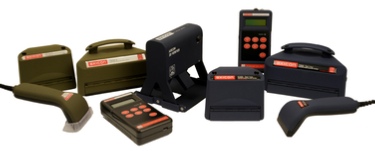

Tel: (630) 235 6077
Email: jn@codemasterllc.com




Lessons to be learned about Axicon verifiers
- The Quick Check 800 portable verifier was not ANSI/CEN/ISO compliant unless the gun-
type scanner was replaced with a wand (either pen or mouse). Because it could not test for reflectivity or contrast, the verification report simply ignored these critical parameters and the so- called final grade could be wrong if these parameters were sub- par. Axicon verifiers are always at the right distance and angle to the symbol, and have the point- and- shoot ease- of- use but are fully ANSI/CEN/ISO compliant. - The Quick Check 800 scanner was locked in to a 5 mil aperture and was not appropriate for all X dimensions; furthermore, the 5 mil aperture depended upon the user holding the gun at the correct distance and angle, but this was not divulged to users or resellers. Axicon verifiers auto-
select the right aperture for the symbol being tested - The Quick Check 800 portable could be made ANSI/CEN/ISO compliant by replacing the gun scanner with an optional, single-
aperture wand device. To verify symbols with various X dimensions, it was necessary to buy several wands at $375 each. Axicon verifiers are fully ANSI/CEN/ISO compliant from the factory; no extra- cost optional accessories are needed. - Extra-
cost, optional wand devices would make the Quick Check 800 ANSI/CEN/ISO compliant, but these devices must be moved across the symbol at a precise, unchanging speed; too fast, too slow or uneven speeds would influence the test results. Axicon verifiers electronically determine the scan speed: the user does not have to move anything. - The optional Quick Check pen wand should be held at a precise angle to the barcode, but it was easy not to; this could have a significant effect on verification results. Axicon verifiers maintain a fixed distance and angle to the symbol.
- The Quick Check wand pen wand did not shield the barcode from ambient room lighting, although the mouse wand did. The results between the two could vary considerably. Axicon verifiers shield the symbol from ambient room light. Results are highly repeatable in all lighting situations.
- The standard Quick Check 800 portable verifier provided no means of capturing the verification report. One solution was a very expensive dot matrix printer. Another solution was a nine-
pin serial interface to a PC (not Mac compatible). USB interface was never available. Axicon linear verifiers are USB tethered to a PC or Mac. Reports can be saved in the Axicon .scn format, as PDF’s using the Adobe application or one of the many available free versions, or as text documents. Scn files can be emailed to Axicon for smart tech support - The Quick Check 800 verification report was a receipt-
type strip, even with the PC interface. No red or green indicator colors were available. Axicon verifier on- screen reports are fully user- configurable and contain indicator colors to signal passing or failing grades; reports print as letter- size documents. - The Quick Check 800 portable was required to use NICAD batteries, although in later years the manufacturer conceded that alkaline batteries could also be used. As NICAD batteries became scarce due to environmental concerns, other batteries were increasingly used, but the integrated recharger caused numerous battery explosions, ruining the verifier. Axicon USB tethered verifiers have no onboard batteries: nothing to lose power and go dead, nothing to recharge, nothing to replace.
- Many Quick Check 800 users ended up plugging the verifier into the wall charger and just leaving it there, effectively making it a desktop unit. Axicon verifiers can be converted to portables with the optional PV-
1000 Portable Display Unit (PDU). This gives the user the total flexibility of a verifier that can be converted to a portable, and back again to a tethered device. The PDU uses NIMH batteries, environmentally friendly and available everywhere. Verification reports are displayed on the LCD display for spot checking, and the full repor tis easily transferred to the PC with any USB memory stick.